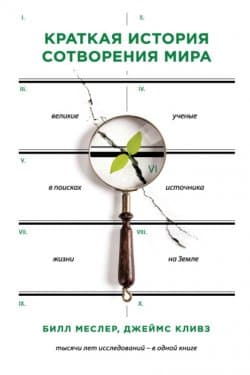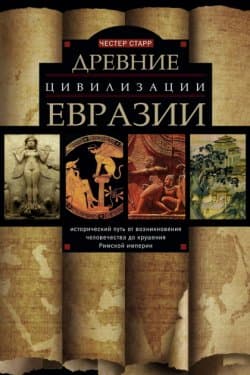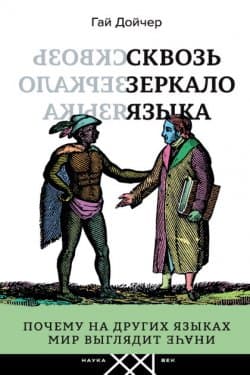Sapiens. Краткая история человечества - Юваль Ной Харари (2011)
-
Год:2011
-
Название:Sapiens. Краткая история человечества
-
Автор:
-
Жанр:
-
Язык:Русский
-
Страниц:231
-
Рейтинг:
-
Ваша оценка:
Homo sapiens сто тысяч лет назад являлся одним из шести видов человека, которые существовали на планете. Этот вид был ничем не примечательным животным, играющим в экосистеме небольшую роль, примерно такую как гориллы, светлячки, медузы. В хозяина мира вид Homo sapiens, около семидесяти тысяч лет назад, превратило загадочное изменение когнитивных способностей. Каким образом человеку разумному удалось покорить мир? Какова судьба других человеческих видов? В какой период и по какой причине возникли государства, религии, деньги? Как появлялись, рушились империи? По какой причине большинство народов ставили мужчин выше женщин? Как капитализм и наука стали в современной эпохе господствующими вероучениями? Люди становились с течением времени счастливее? Каково будущее человечества?
Юваль Харари рассказывает, как исторический ход влиял на общество и действительность вокруг него. Его произведение показывает связь между событиями, произошедшими в прошлом, и проблемами современности, что непременно заставляет читателя пересмотреть все устоявшиеся представления об окружающем мире.
Sapiens. Краткая история человечества - Юваль Ной Харари читать онлайн бесплатно полную версию книги
29 Avi Pinkas (ed.), Farmyard Animals in Israel – Research, Humanism and Activity (Rishon Le-Ziyyon: The Association for Farmyard Animals, 2009 [Hebrew]), 169–199; “Milk Production – the Cow” [Hebrew], The Dairy Council, accessed March 22, 2012, dataid=cow.htm.
30 Edward Evan Evans-Pritchard, The Nuer: A Description of the Modes of Livelihood and Political Institutions of a Nilotic People (Oxford: Oxford University Press, 1969); E.C. Amoroso and P.A. Jewell, ‘The Exploitation of the Milk-Ejection Reflex by Primitive People’, in Man and Cattle: Proceedings of the Symposium on Domestication at the Royal Anthropological Institute,
24–26 May I960, ed. A.E. Mourant and EE. Zeuner (London: The Royal Anthropological Institute, 1963), 129–134.
31 Johannes Nicolaisen, Ecology and Culture of the Pastoral Tuareg (Copenhagen: National Museum, 1963), 63.
32 Angus Maddison, The World Economy, vol. 2 (Paris: Development Centre of the Organization of Economic Cooperation and Development, 2006), 636; “Historical Estimates of World Population”, U.S. Census Bureau, accessed December 10, 2010, html.
33 Robert B. Mark, The Origins of the Modern World: A Global and Ecological Narrative (Lanham, MD: Rowman & Littlefield Publishers, 2002), 24.
34 Raymond Westbrook, ‘Old Babylonian Period’, in A History of Ancient Near Eastern Law, vol 1, ed. Raymond Westbrook (Leiden: Brill, 2003), 361–430; Martha T. Roth, Law Collections from Mesopotamia and Asia Minor, 2nd ed. (Atlanta: Scholars Press, 1997), 71-142; M. E. J. Richardson, Hammurabis Laws: Text, Translation and Glossary (London: T & T Clark International, 2000).
35 Roth, Law Collections from Mesopotamia, 76.
36 Roth, Law Collections from Mesopotamia, 121.
37 Roth, Law Collections from Mesopotamia, 122–123.
38 Roth, Law Collections, 133–134.
39 Constance Brittaine Bouchard, Strong of Body, Brave and Noble: Chivalry and Society in Medieval France (New York: Cornell University Press, 1998), 99; Mary Martin McLaughlin, ‘Survivors and Surrogates: Children and Parents from the Ninth to Thirteenth Centuries’, in Medieval Families: Perspectives on Marriage, Household and Children, ed. Carol Neel (Toronto: University of Toronto Press, 2004), 81 n. 81; Lise E. Hull, Britain's Medieval Castles (Westport: Praeger, 2006), 144.
40 Andrew Robinson, The Story of Writing (New York: Thames and Hudson, 1995), 63; Hans J. Nissen, Peter Damerow and Robert K. Englung, Archaic Bookkeeping: Writing and Techniques of Economic Administration in the Ancient Near East (Chicago, London: The University of Chicago Press, 1993), 36.
41 Marcia and Robert Ascher, Mathematics of the Incas- Code of the Quipu (New York: Dover Publications, 1981).
42 Gary Urton. Signs of the Inka Khipu (Austin: University of Texas Press, 2003); Galen Brokaw. A History of the Khipu (Cambridge: Cambridge University Press, 2010).
43 Stephen D. Houston (ed.), The First Writing: Script Invention as History and Process (Cambridge: Cambridge University Press, 2004), 222.
44 Sheldon Pollock, ‘Axialism and Empire’, in Axial Civilizations and World History, ed. Johann P. Arnason, S. N. Eisenstadt and Bjorn Wittrock (Leiden: Brill, 2005), 397-451
45 Harold M. Tanner, China: A History (Indianapolis: Hackett, Pub. Co., 2009), 34.
46 Ramesh Chandra, Identity and Genesis of Caste System in India (Delhi: Kalpaz Publications, 2005); Michael Bamshad et al., ‘Genetic Evidence on the Origins of Indian Caste Population, Genome Research 11 (2001): 904-1004; Susan Bayly, Caste, Society and Politics in India from the Eighteenth Century to the Modern Age (Cambridge: Cambridge University Press, 1999).
47 Houston, First Writing, 196.
 Библия. Синодальный перевод РБО
Библия. Синодальный перевод РБО
 Краткая история сотворения мира. Великие ученые в поисках источника жизни на Земле Билл Меслер, Джеймс Кливз
Краткая история сотворения мира. Великие ученые в поисках источника жизни на Земле Билл Меслер, Джеймс Кливз
 Древние цивилизации Евразии. Исторический путь от возникновения человечества до крушения Римской империи Честер Старр
Древние цивилизации Евразии. Исторический путь от возникновения человечества до крушения Римской империи Честер Старр
 Онтогенез. От клетки до человека Джейми Дейвис
Онтогенез. От клетки до человека Джейми Дейвис
 Сквозь зеркало языка. Почему на других языках мир выглядит иначе Гай Дойчер
Сквозь зеркало языка. Почему на других языках мир выглядит иначе Гай Дойчер
 Как начинались великие религии. История духовной культуры человечества Джозеф Гаер
Как начинались великие религии. История духовной культуры человечества Джозеф Гаер

 Пир теней
Пир теней  Князь во все времена
Князь во все времена  Когда порвется нить
Когда порвется нить  Пока я здесь
Пока я здесь 



















